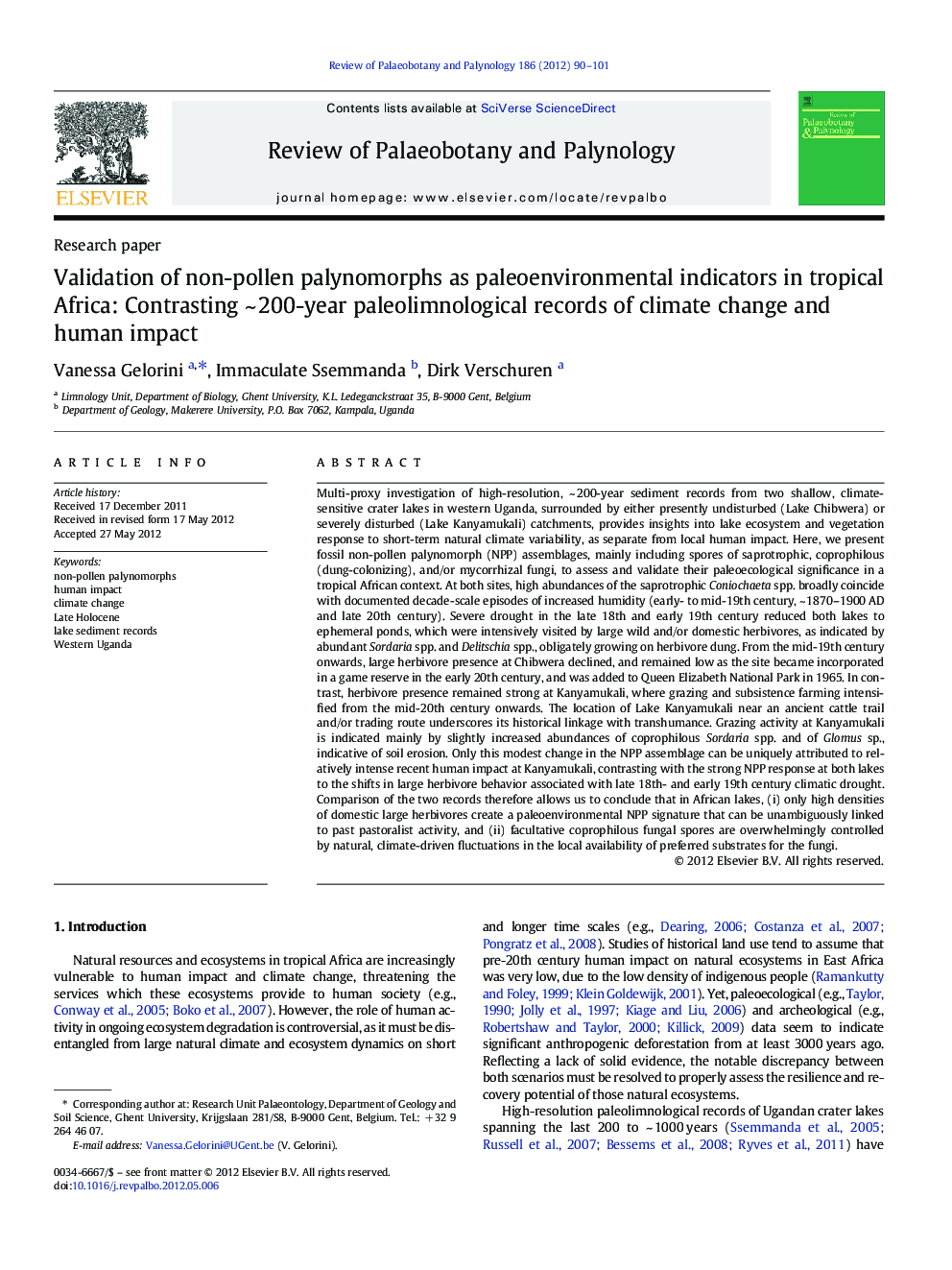| کد مقاله | کد نشریه | سال انتشار | مقاله انگلیسی | نسخه تمام متن |
|---|---|---|---|---|
| 4750359 | 1642512 | 2012 | 12 صفحه PDF | دانلود رایگان |

Multi-proxy investigation of high-resolution, ~ 200-year sediment records from two shallow, climate-sensitive crater lakes in western Uganda, surrounded by either presently undisturbed (Lake Chibwera) or severely disturbed (Lake Kanyamukali) catchments, provides insights into lake ecosystem and vegetation response to short-term natural climate variability, as separate from local human impact. Here, we present fossil non-pollen palynomorph (NPP) assemblages, mainly including spores of saprotrophic, coprophilous (dung-colonizing), and/or mycorrhizal fungi, to assess and validate their paleoecological significance in a tropical African context. At both sites, high abundances of the saprotrophic Coniochaeta spp. broadly coincide with documented decade-scale episodes of increased humidity (early- to mid-19th century, ~ 1870–1900 AD and late 20th century). Severe drought in the late 18th and early 19th century reduced both lakes to ephemeral ponds, which were intensively visited by large wild and/or domestic herbivores, as indicated by abundant Sordaria spp. and Delitschia spp., obligately growing on herbivore dung. From the mid-19th century onwards, large herbivore presence at Chibwera declined, and remained low as the site became incorporated in a game reserve in the early 20th century, and was added to Queen Elizabeth National Park in 1965. In contrast, herbivore presence remained strong at Kanyamukali, where grazing and subsistence farming intensified from the mid-20th century onwards. The location of Lake Kanyamukali near an ancient cattle trail and/or trading route underscores its historical linkage with transhumance. Grazing activity at Kanyamukali is indicated mainly by slightly increased abundances of coprophilous Sordaria spp. and of Glomus sp., indicative of soil erosion. Only this modest change in the NPP assemblage can be uniquely attributed to relatively intense recent human impact at Kanyamukali, contrasting with the strong NPP response at both lakes to the shifts in large herbivore behavior associated with late 18th- and early 19th century climatic drought. Comparison of the two records therefore allows us to conclude that in African lakes, (i) only high densities of domestic large herbivores create a paleoenvironmental NPP signature that can be unambiguously linked to past pastoralist activity, and (ii) facultative coprophilous fungal spores are overwhelmingly controlled by natural, climate-driven fluctuations in the local availability of preferred substrates for the fungi.
► NPPs are validated as paleoenvironmental indicators in tropical Africa.
► Changes in fungal assemblages are related to climate variability and human impact.
► Only high densities of herbivores create a paleoenvironmental NPP signature.
► Local substrate controls the distributions of facultative coprophilous fungal spores.
Journal: Review of Palaeobotany and Palynology - Volume 186, 15 October 2012, Pages 90–101